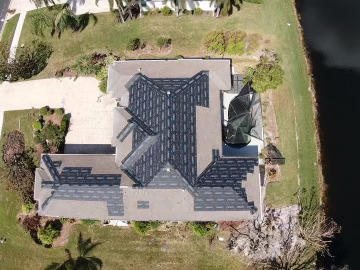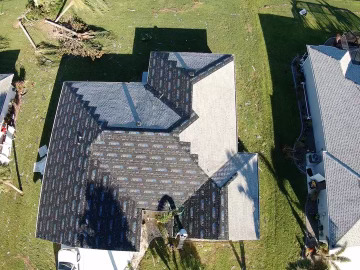
Your roof, the primary protector of your home, shields you from the elements – rain, wind, and everything in between. But what happens when this vital defense gets compromised? Roof damage caused by storms, leaks, or even ongoing repairs can leave your home vulnerable. Roof tarp services offer a crucial temporary solution to safeguard your property while awaiting or providing a permanent repair.
Roof tarping involves installing a heavy-duty, waterproof tarp material over the damaged section of your roof. This creates a barrier that shields your home’s interior from rain, wind, debris, and further water damage. It’s a vital stopgap measure while you wait for a permanent roof repair or navigate the insurance claim process.
Why should you consider roof tarping services?
- Minimized Water Damage: A damaged roof exposes your home to the risk of water infiltration. Rainwater leaking through cracks, missing shingles, or faulty flashing can cause extensive damage to ceilings, walls, insulation, and precious belongings. Roof tarping acts as a temporary shield, preventing further water damage and potentially saving you from a costly and extensive restoration process down the line.
- Prevents Mold Growth: Water damage is a breeding ground for mold growth, which can pose serious health risks and structural concerns. Mold spores can trigger respiratory problems, allergies, and even skin irritation. By keeping moisture out, roof tarping helps prevent the development of mold and mildew, ensuring a healthier living environment for your family.
- Protects Your Possessions: A compromised roof allows wind, rain, and debris to enter your home, potentially damaging furniture, electronics, and valuables. Imagine the chaos of a rainstorm soaking your expensive furniture or windblown debris shattering a treasured heirloom. Roof tarping safeguards your belongings from the elements, offering peace of mind while a permanent solution is planned.
- Enhances Safety: Damaged roofing materials can become loose or fall, creating a safety hazard for you and anyone around your home. Missing shingles or broken tiles can fall and cause injuries. Roof tarping secures the damaged area, preventing further deterioration and potential injuries.
- Provides Peace of Mind: When faced with roof damage, the uncertainty can be stressful. The thought of your home exposed to the elements and potential further damage can be overwhelming. Roof tarping offers a sense of security by mitigating further damage while a permanent solution is planned. You can rest assured knowing your home is protected while a long-term fix is on the horizon.
When to Consider Roof Tarping
Several situations call for roof tarping services:
- Storm Damage: High winds, hail, or heavy rain can cause roof damage like missing shingles, punctures, or tears. Roof tarping prevents further water infiltration while permanent repairs are arranged.
- Leaks: Leaks can originate from various sources, including damaged flashing around chimneys or vents, clogged gutters overflowing with debris, or faulty seals around roof penetrations like satellite dishes. Roof tarping serves as a temporary fix until the leak’s source can be identified and addressed.
- Ongoing Repairs: While waiting for a roof replacement or repairs, your roof will be exposed for a period. Roof tarping safeguards your home during this vulnerable time, minimizing the risk of water damage or debris infiltration.
What to Expect from a Roof Tarping Service
When facing roof damage, quick action minimizes the impact. Here’s what you can expect from a professional roof-tarping service:
- Inspection: A qualified roofer will first assess the damage to your roof. This involves identifying the source of the problem, the extent of the damage, and measuring the area requiring tarping. Based on this assessment, they will determine the appropriate size and type of tarp for your roof. Different tarp materials offer varying degrees of durability and weather resistance, and a professional can recommend the best option for your specific situation.
- Tarp Installation: Experienced roofers prioritize safety during the entire process. They may use fall protection equipment and ensure proper ventilation if working in confined spaces. Once safety measures are in place, they will securely fasten the tarp to the roof structure using appropriate materials and techniques. This ensures the tarp can withstand various weather conditions, including strong winds and rain.
- Clear Communication: Reliable roofers will explain the entire tarping process in detail, addressing any questions or concerns you may have. They will also provide a clear estimate for the service, outlining the cost of materials, labor, and any potential disposal fees for the used tarp. Transparency builds trust, and a reputable company will ensure you understand the process and associated costs before proceeding






